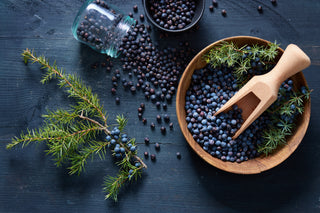10 Things You Never Knew About Gin—But Probably Should!
1. Juniper: The Defining Ingredient
Every gin must legally contain juniper berries. Without juniper, it's just not gin! These little berries give gin its signature piney flavor, which has been described as woodsy, herbal, and refreshing. The juniper berry is what separates gin from vodka, as vodka has no such botanical requirement.
2. Gin’s Dutch Origins
While we often associate gin with England, its origins are in the Netherlands. The Dutch were producing a juniper-flavored spirit called "jenever" long before gin became popular in Britain. British soldiers discovered jenever during the 17th century and brought it back to England, where it evolved into the gin we know today.
3. Gin and Vodka: Siblings, Not Twins
Gin and vodka share the same base—a neutral spirit made from grains, potatoes, or even grapes. However, gin goes through an extra step: the infusion of botanicals, particularly juniper. This is what gives gin its distinct flavor, while vodka is distilled to be as neutral and flavorless as possible. So while they may start the same, they finish in very different places.
4. Gin Isn’t All About London Dry
London Dry is the most well-known type of gin, but there are several other styles to explore:
- CLASSIC GIN: Juniper-forward with a clean, neutral base.
- CONTEMPORARY STYLE GIN: Features juniper but prioritized how juniper works with, and is complemented by other botanicals to build rich flavor profiles and a gin’s character.
- LONDON DRY GIN: A traditional style where all flavors are imparted during distillation. It does not need to be made in the U.K.
- OLD TOM GIN: A historically sweetened or botanically rich style.
- NAVY STRENGTH GIN: Overproof gin with a minimum ABV of 57%.
- SLOE GIN: A gin-based liqueur flavored with sloe berries.
- COMPOUND GIN: Flavors are imparted through maceration rather than distillation.
- COLOR-CHANGING GIN: Changes color when tonic or citrus is added.
5. Gin Was a Medicine Before It Was a Spirit
In the 17th century, gin was used for medicinal purposes. It was believed to cure everything from kidney ailments to stomach issues. Doctors even prescribed it for the plague—although there’s no evidence that it was an effective treatment!
6. Botanicals: The Secret Behind Each Gin
Each gin has its own signature blend of botanicals, and no two gins are exactly alike. Common botanicals include coriander, angelica root, citrus peel, and spices like cardamom or cinnamon. Distillers get creative by using ingredients like cucumber or lavender to create unique flavors. Conniption Gin, for example, uses cucumber and honeysuckle. Explore more of the flavors in Conniption Gin.
7. Gin’s ‘Gin Craze’ Was an Epidemic
In the early 18th century, gin was so popular in London that it became a societal problem. Known as the “Gin Craze,” excessive gin consumption led to public health issues, crime, and even death. It got so out of control that the British government had to step in with regulations to curb its production.
8. You Don’t Have to Be a Bartender to Enjoy Gin
Despite its complexity, gin is one of the most approachable spirits for at-home cocktails. A simple gin and tonic is easy to make but full of flavor, thanks to gin’s botanicals. You can also try a classic Martini or a refreshing Tom Collins—both are simple, elegant, and highlight gin’s versatility.
Looking for cocktail ideas? Check out Conniption’s gin cocktail recipes.
9. Juniper Isn’t the Only Star
While juniper is the defining botanical, many gins downplay it in favor of other flavors. New Western gins focus on alternative botanicals like citrus, floral notes, or spices, creating a more balanced and sometimes less juniper-forward experience. If you’re someone who’s been put off by the piney taste of traditional gin, it’s worth trying a New Western gin to see if it changes your mind.
10. Gin’s Renaissance Is Here
Gin is currently enjoying a renaissance, with distilleries around the world experimenting with new techniques and botanicals. Craft gins are now a staple of the bar scene, offering drinkers more choices than ever before. Whether you’re a long-time fan or new to the spirit, there’s never been a better time to explore what gin has to offer.
